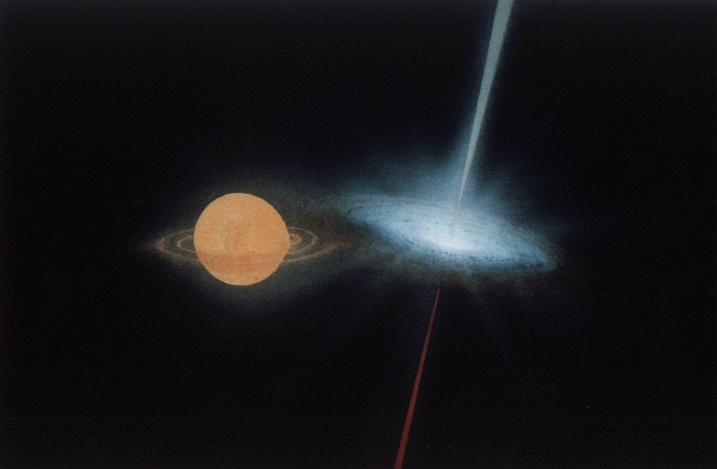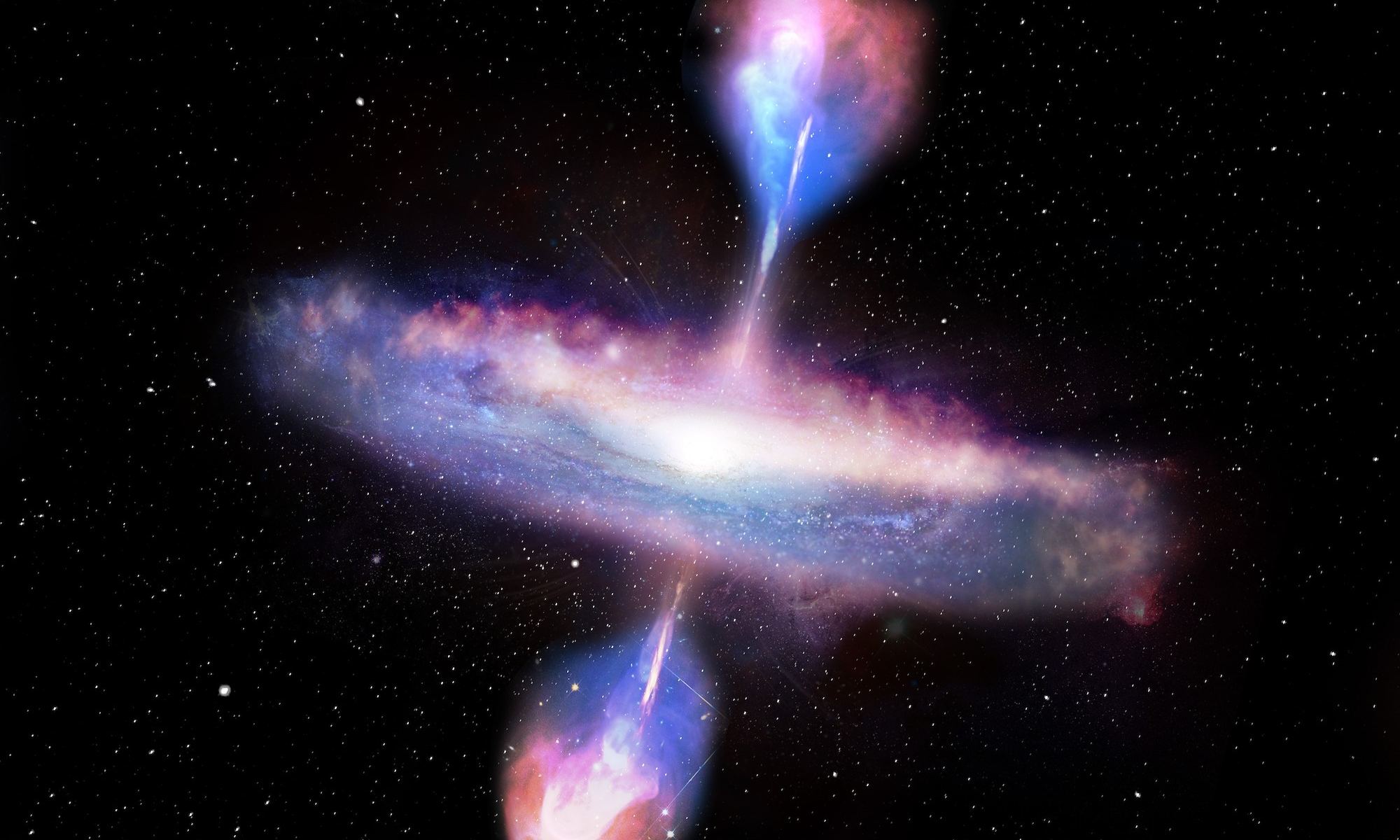Dyson Spheres have been a tantalising digression in the hunt for alien intelligence. Just recently seven stars have been identified as potential candidates with most of their radiation given off in the infrared wavelengths. Potentially this is the signature of heat from a matrix of spacecraft around the star but alas, a new paper has another slightly less exciting explanation; dust obscured galaxies.
Continue reading “There’s Another, More Boring Explanation for those Dyson Sphere Candidate Stars”What are the Differences Between Quasars and Microquasars?
Quasars are fascinating objects; supermassive black holes that are actively feasting on material from their accretion disks. The result is a jet that can outshine the combined light from the entire galaxy! There are smaller blackholes too that are the result of the death of stars and these also sometimes seem to host accretion disks and jets just like their larger cousins. We call these microquasars and, whilst there are similarities between them, there are differences too.
Continue reading “What are the Differences Between Quasars and Microquasars?”Astronomers are Getting Really Good at Weighing Baby Supermassive Black Holes
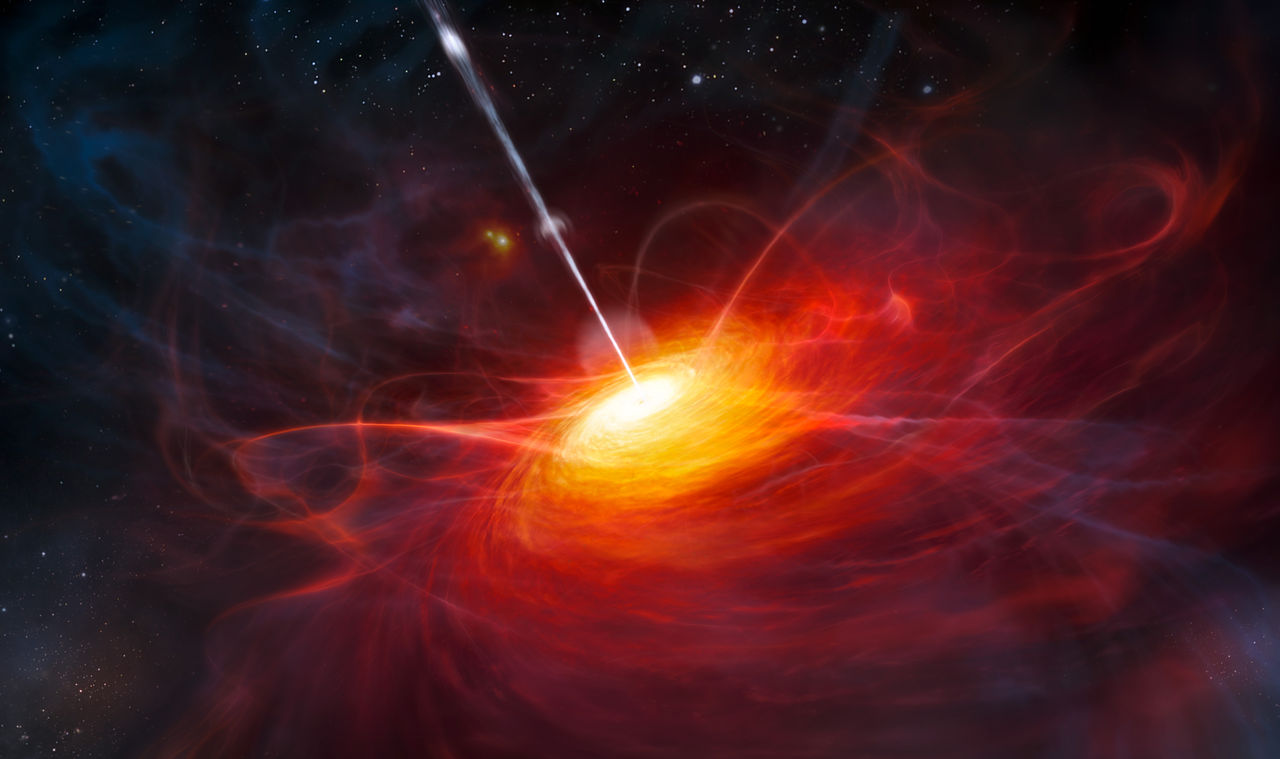
In the 1970s, astronomers deduced that the persistent radio source coming from the center of our galaxy was actually a supermassive black hole (SMBH). This black hole, known today as Sagittarius A*, is over 4 million solar masses and is detectable by the radiation it emits in multiple wavelengths. Since then, astronomers have found that SMBHs reside at the center of most massive galaxies, some of which are far more massive than our own! Over time, astronomers observed relationships between the properties of galaxies and the mass of their SMBHs, suggesting that the two co-evolve.
Using the GRAVITY+ instrument at the Very Large Telescope Interferometer (VLTI), a team from the Max Planck Institute for Extraterrestrial Physics (MPE) recently measured the mass of an SMBH in SDSS J092034.17+065718.0. At a distance of about 11 billion light-years from our Solar System, this galaxy existed when the Universe was just two billion years old. To their surprise, they found that the SMBH weighs in at a modest 320 million solar masses, which is significantly under-massive compared to the mass of its host galaxy. These findings could revolutionize our understanding of the relationship between galaxies and the black holes residing at their centers.
Continue reading “Astronomers are Getting Really Good at Weighing Baby Supermassive Black Holes”Webb Sees Dozens Of Young Quasars in the First Billion Years of the Universe
Within almost every galaxy is a supermassive black hole. Millions, sometimes billions of solar masses locked within an event horizon of space and time. They can power luminous quasars, drive star formation, and change the evolution of a galaxy. Because of their size and abundance, supermassive black holes must have formed early in cosmic history. But how early is still an unanswered question. It’s a focus of a recent study on the arXiv.
Continue reading “Webb Sees Dozens Of Young Quasars in the First Billion Years of the Universe”Using Quasars as a New Standard Candle to Define Distance
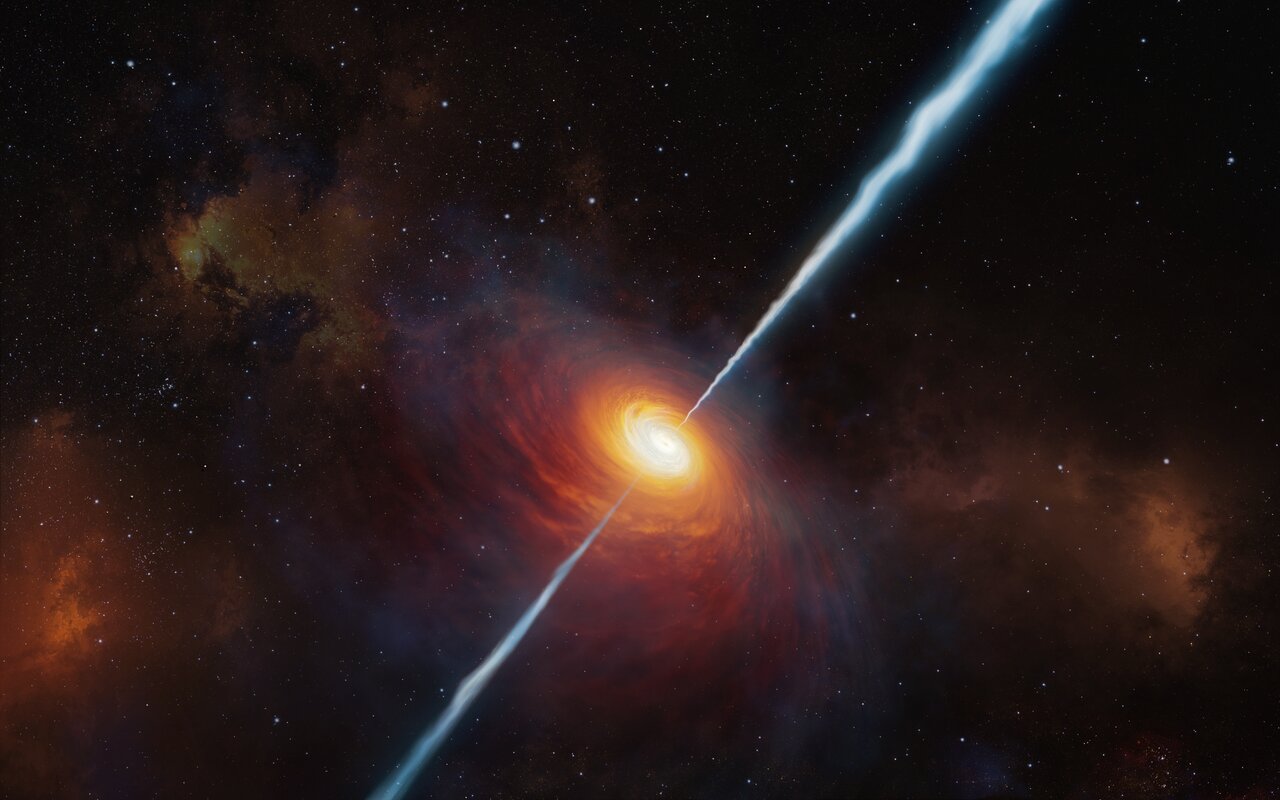
A new study shows a way to use quasars to gauge distance in the early Universe.
The simple question of ‘how far?’ gets at the heart of the history of modern astronomy. Looking out across our galactic backyard into the primordial Universe, different yardsticks—often referred to as ‘standard candles’ —are used to gauge various distances, from near to far.
Continue reading “Using Quasars as a New Standard Candle to Define Distance”A Galaxy is Making New Stars Faster Than its Black Hole Can Starve Them for Fuel

A monster lurks at the heart of many galaxies – even our own Milky Way. This monster possesses the mass of millions or billions of Suns. Immense gravity shrouds it within a dark cocoon of space and time – a supermassive black hole. But while hidden in darkness and difficult to observe, black holes can also shine brighter than an entire galaxy. When feeding, these sleeping monsters awaken transforming into a quasar – one of the Universe’s most luminous objects. The energy a quasar radiates into space is so powerful, it can interfere with star formation for thousands of light years across their host galaxies. But one galaxy appears to be winning a struggle against its awoken blazing monster and in a recent paper published in the Astrophysical Journal, astronomers are trying to determine how this galaxy survives.
Supermassive black holes can cloak themselves in a cocoon of dust, making them invisible even when they should be bright quasars
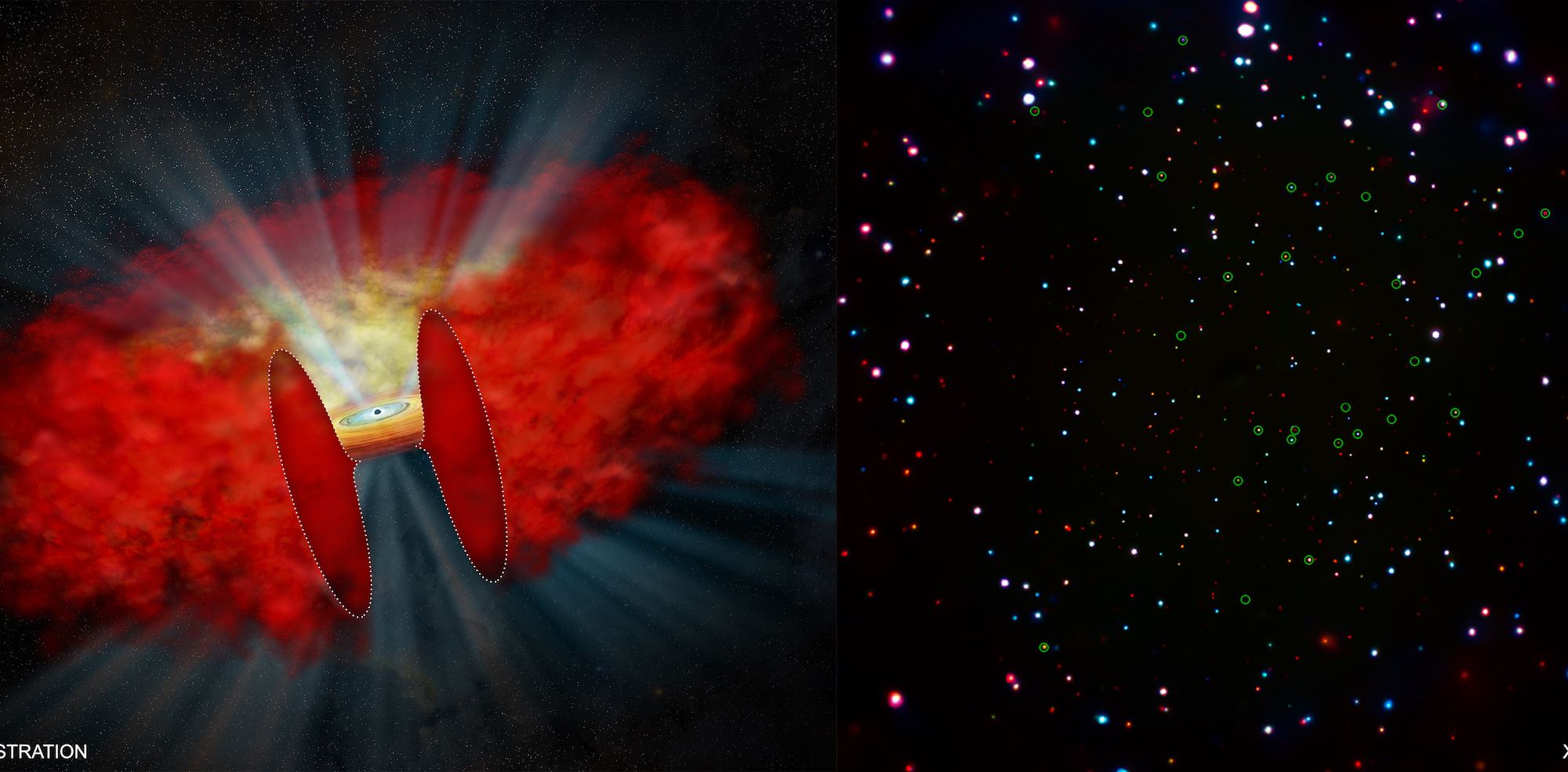
Quasars are the most powerful sources of light in the universe, but sometimes they’re hard to find. A team of astronomers used the Chandra X-ray Space Telescope to find some diamonds in the rough.
Continue reading “Supermassive black holes can cloak themselves in a cocoon of dust, making them invisible even when they should be bright quasars”Quasars are the Biggest Particle Accelerators in the Universe

We puny humans think we can accelerate particles? Look how proud we are of the Large Hadron Collider. But any particle accelerator we build will pale in comparison to Quasars, nature’s champion accelerators.
Those things are beasts.
Read moreFor the First Time, Planets Have Been Discovered in ANOTHER Galaxy!
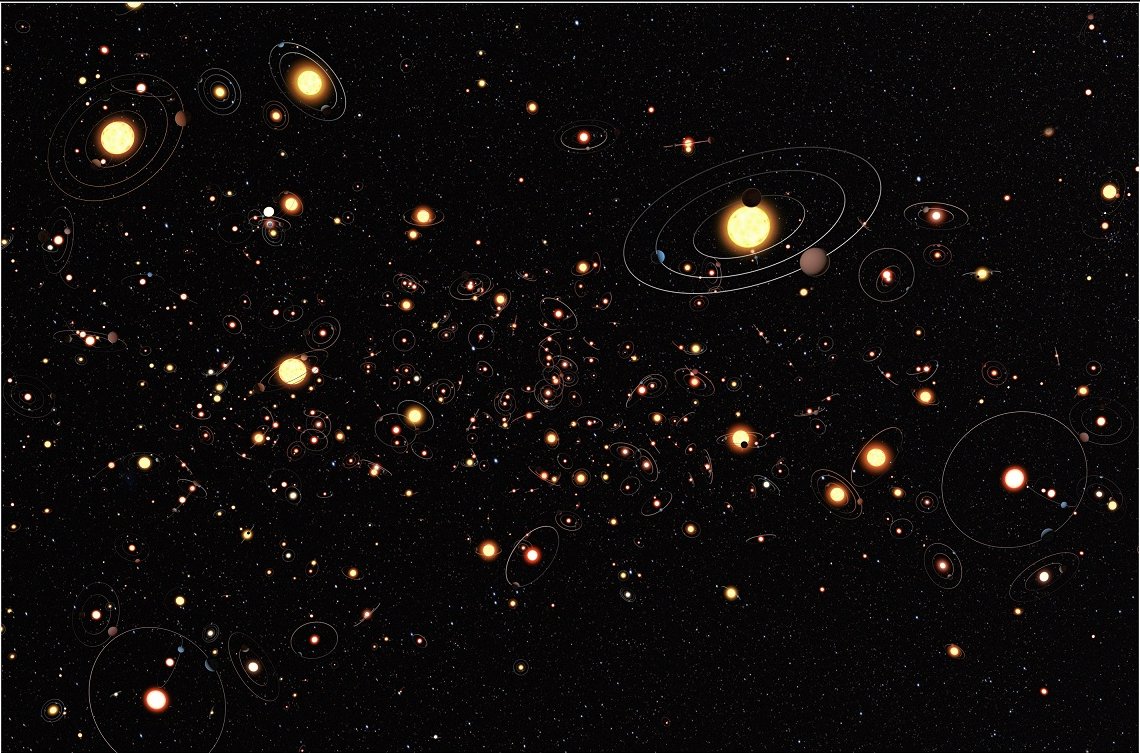
The first confirmed discovery of a planet beyond our Solar System (aka. an Extrasolar Planet) was a groundbreaking event. And while the initial discoveries were made using only ground-based observatories, and were therefore few and far between, the study of exoplanets has grown considerably with the deployment of space-based telescopes like the Kepler space telescope.
As of February 1st, 2018, 3,728 planets have been confirmed in 2,794 systems, with 622 systems having more than one planet. But now, thanks to a new study by a team of astrophysicists from the University of Oklahoma, the first planets beyond our galaxy have been discovered! Using a technique predicting by Einstein’s Theory of General Relativity, this team found evidence of planets in a galaxy roughly 3.8 billion light years away.
The study which details their discovery, titled “Probing Planets in Extragalactic Galaxies Using Quasar Microlensing“, recently appeared in The Astrophysical Journal Letters. The study was conducted by Xinyu Dai and Eduardo Guerras, a postdoctoral researcher and professor from the Homer L. Dodge Department of Physics and Astronomy at the University of Oklahoma, respectively.
For the sake of their study, the pair used the Gravitational Microlensing technique, which relies on the gravitational force of distant objects to bend and focus light coming from a star. As a planet passes in front of the star relative to the observer (i.e. makes a transit), the light dips measurably, which can then be used to determine the presence of a planet.
In this respect, Gravitational Microlensing is a scaled-down version of Gravitational Lensing, where an intervening object (like a galaxy cluster) is used to focus light coming from a galaxy or other large object located beyond it. It also incorporates a key element of the highly-effective Transit Method, where stars are monitored for dips in brightness to indicate the presence of an exoplanet.
In addition to this method, which is the only one capable of detecting extra-solar planets at truly great distances (on the order of billions of light years), the team also used data from NASA’s Chandra X-ray Observatory to study a distant quasar known as RX J1131–1231. Specifically, the team relied on the microlensing properties of the supermassive black hole (SMBH) located at the center of RX J1131–1231.
They also relied on the OU Supercomputing Center for Education and Research to calculate the microlensing models they employed. From this, they observed line energy shifts that could only be explained by the presence of of about 2000 unbound planets between the quasar’s stars – which ranged from being as massive as the Moon to Jupiter – per main-sequence star.
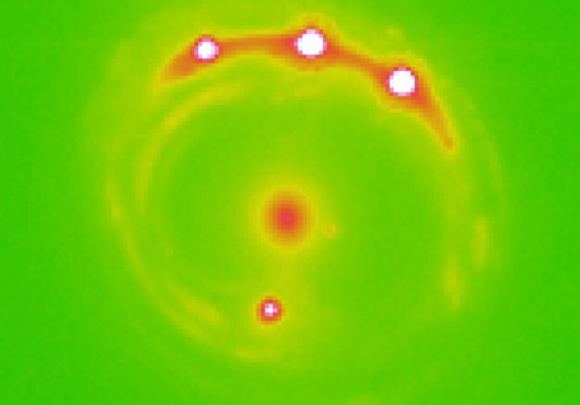
As Xinyu Dai explained in a recent University of Oklahoma press release:
“We are very excited about this discovery. This is the first time anyone has discovered planets outside our galaxy. These small planets are the best candidate for the signature we observed in this study using the microlensing technique. We analyzed the high frequency of the signature by modeling the data to determine the mass.”
While 53 planets have been discovered within the Milky Way galaxy using the Microlensing technique, this is the first time that planets have been observed in other galaxies. Much like the first confirmed discovery of an extra-solar planet, scientists were not even certain planets existed in other galaxies prior to this study. This discovery has therefore brought the study of planets beyond our Solar System to a whole new level!
And as Eduardo Guerras indicated, the discovery was possible thanks to improvements made in both modelling and instrumentation in recent years:
“This is an example of how powerful the techniques of analysis of extragalactic microlensing can be. This galaxy is located 3.8 billion light years away, and there is not the slightest chance of observing these planets directly, not even with the best telescope one can imagine in a science fiction scenario. However, we are able to study them, unveil their presence and even have an idea of their masses. This is very cool science.”
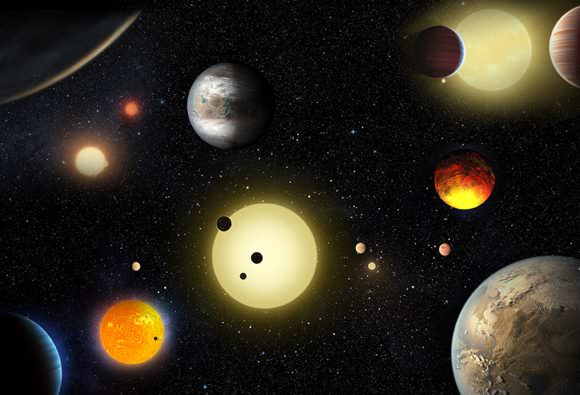
In the coming years, more sophisticated observatories will be available, which will allow for even more in the way of discoveries. These include space-based instruments like the James Webb Space Telescope (which is scheduled to launch in Spring of 2019) and ground-based observatories like the ESO’s OverWhelmingly Large (OWL) Telescope, the Very Large Telescope (VLT), the Extremely Large Telescope (ELT), and the Colossus Telescope.
At this juncture, the odds are good that some of these discoveries will be in neighboring galaxies. Perhaps then we can begin to determine just how common planets are in our Universe. At present, it is estimated that could be as many as 100 billion planets in the Milky Way Galaxy alone! But with an estimated 1 to 2 trillion galaxies in the Universe… well, you do the math!
Further Reading: University of Oklahoma, The Astrophysical Journal Letters
Too Big, Too Soon. Monster Black Hole Seen Shortly After the Big Bang
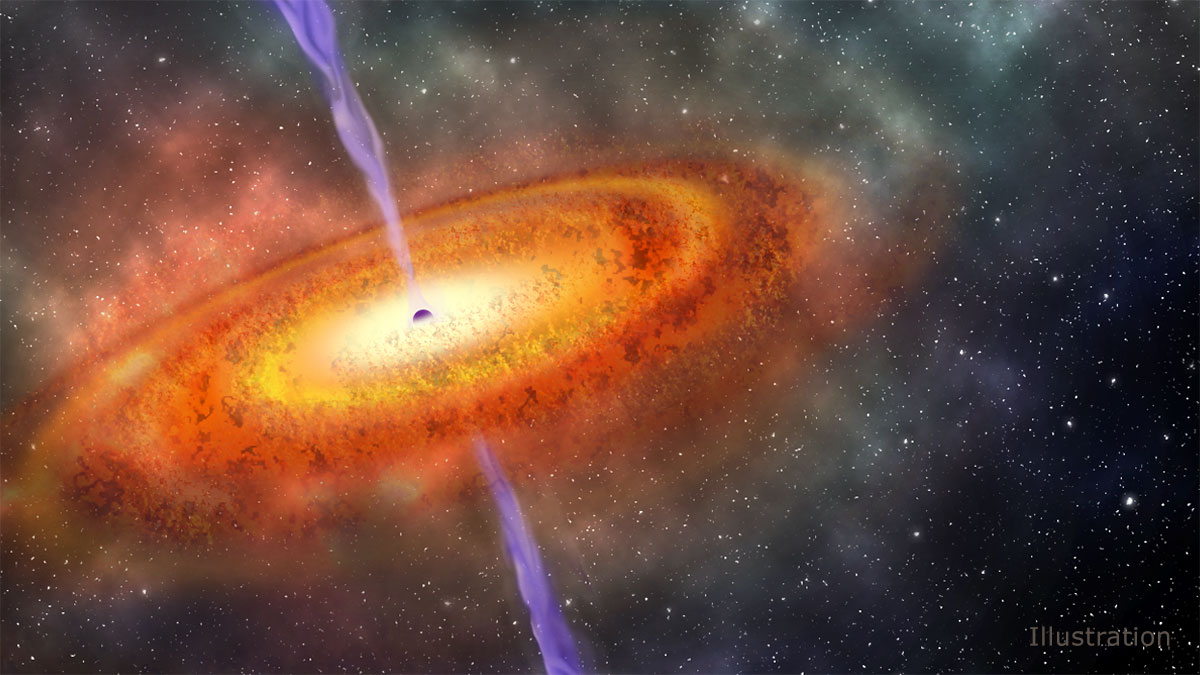
It is a well known fact among astronomers and cosmologists that the farther into the Universe you look, the further back in time you are seeing. And the closer astronomers are able to see to the Big Bang, which took place 13.8 billion years ago, the more interesting the discoveries tend to become. It is these finds that teach us the most about the earliest periods of the Universe and its subsequent evolution.
For instance, scientists using the Wide-field Infrared Survey Explorer (WISE) and the Magellan Telescopes recently observed the earliest Supermassive Black Hole (SMBH) to date. According to the discovery team’s study, this black hole is roughly 800 million times the mass of our Sun and is located more than 13 billion light years from Earth. This makes it the most distant, and youngest, SMBH observed to date.
The study, titled “An 800-million-solar-mass black hole in a significantly neutral Universe at a redshift of 7.5“, recently appeared in the journal Nature. Led by Eduardo Bañados, a researcher from the Carnegie Institution for Science, the team included members from NASA’s Jet Propulsion Laboratory, the Max Planck Institute for Astronomy, the Kavli Institute for Astronomy and Astrophysics, the Las Cumbres Observatory, and multiple universities.
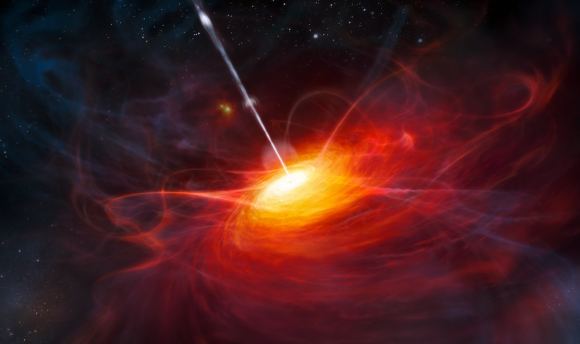
As with other SMBHs, this particular discovery (designated J1342+0928) is a quasar, a class of super bright objects that consist of a black hole accreting matter at the center of a massive galaxy. The object was discovered during the course of a survey for distant objects, which combined infrared data from the WISE mission with ground-based surveys. The team then followed up with data from the Carnegie Observatory’s Magellan telescopes in Chile.
As with all distant cosmological objects, J1342+0928’s distance was determined by measuring its redshift. By measuring how much the wavelength of an object’s light is stretched by the expansion of the Universe before it reaches Earth, astronomers are able to determine how far it had to travel to get here. In this case, the quasar had a redshift of 7.54, which means that it took more than 13 billion years for its light to reach us.
As Xiaohui Fan of the University of Arizona’s Steward Observatory (and a co-author on the study) explained in a Carnegie press release:
“This great distance makes such objects extremely faint when viewed from Earth. Early quasars are also very rare on the sky. Only one quasar was known to exist at a redshift greater than seven before now, despite extensive searching.”
Given its age and mass, the discovery of this quasar was quite the surprise for the study team. As Daniel Stern, an astrophysicist at NASA’s Jet Propulsion Laboratory and a co-author on the study, indicated in a NASA press release, “This black hole grew far larger than we expected in only 690 million years after the Big Bang, which challenges our theories about how black holes form.”
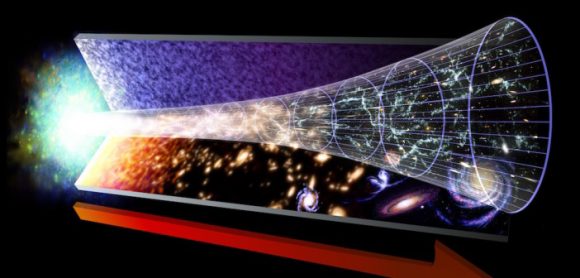
Essentially, this quasar existed at a time when the Universe was just beginning to emerge from what cosmologists call the “Dark Ages”. During this period, which began roughly 380,000 years to 150 million years after the Big Bang, most of the photons in the Universe were interacting with electrons and protons. As a result, the radiation of this period is undetectable by our current instruments – hence the name.
The Universe remained in this state, without any luminous sources, until gravity condensed matter into the first stars and galaxies. This period is known as the “Reinozation Epoch”, which lasted from 150 million to 1 billion years after the Big Bang and was characterized by the first stars, galaxies and quasars forming. It is so-named because the energy released by these ancient galaxies caused the neutral hydrogen of the Universe to get excited and ionize.
Once the Universe became reionzed, photons could travel freely throughout space and the Universe officially became transparent to light. This is what makes the discovery of this quasar so interesting. As the team observed, much of the hydrogen surrounding it is neutral, which means it is not only the most distant quasar ever observed, but also the only example of a quasar that existed before the Universe became reionized.
In other words, J1342+0928 existed during a major transition period for the Universe, which happens to be one of the current frontiers of astrophysics. As if this wasn’t enough, the team was also confounded by the object’s mass. For a black hole to have become so massive during this early period of the Universe, there would have to be special conditions to allow for such rapid growth.
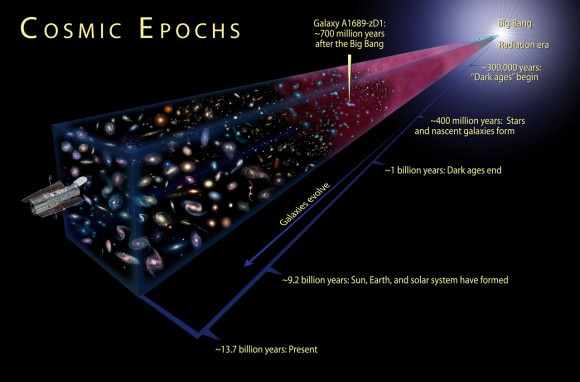
What these conditions are, however, remains a mystery. Whatever the case may be, this newly-found SMBH appears to be consuming matter at the center of a galaxy at an astounding rate. And while its discovery has raised many questions, it is anticipated that the deployment of future telescopes will reveal more about this quasar and its cosmological period. As Stern said:
“With several next-generation, even-more-sensitive facilities currently being built, we can expect many exciting discoveries in the very early universe in the coming years.”
These next-generation missions include the European Space Agency’s Euclid mission and NASA’s Wide-field Infrared Survey Telescope (WFIRST). Whereas Euclid will study objects located 10 billion years in the past in order to measure how dark energy influenced cosmic evolution, WFIRST will perform wide-field near-infrared surveys to measure the light coming from a billion galaxies.
Both missions are expected to reveal more objects like J1342+0928. At present, scientists predict that there are only 20 to 100 quasars as bright and as distant as J1342+0928 in the sky. As such, they were most pleased with this discovery, which is expected to provide us with fundamental information about the Universe when it was only 5% of its current age.
Further Reading: NASA, Carnegie Science, Nature


